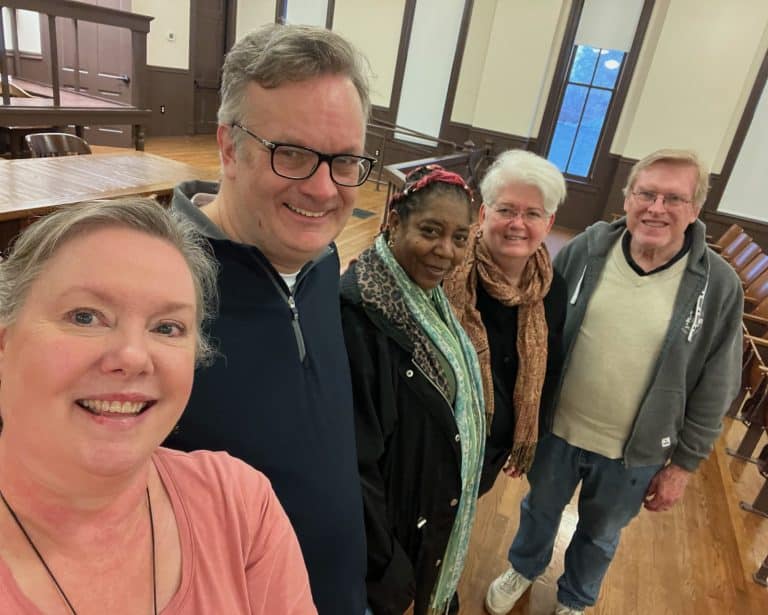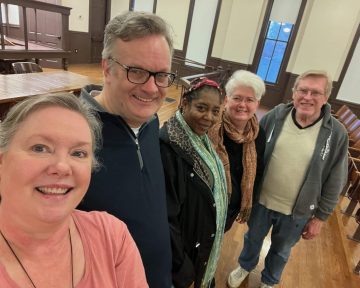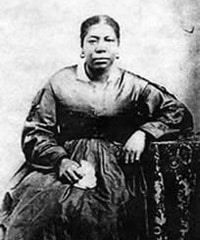A couple of weekends ago, an Exponent II friend was in Mississippi and we met up a the Emmett Till Interpretive Center in Sumner, MS. On the drive there, we also went by the grocery store where the whole story began. Emmett Till was a 14-year-old boy from Chicago in Mississippi for the summer visiting family who was killed because he whistled at Carolyn Bryant, the 21-year-old wife of the store owner. It is a horrific story of violence against a black child by white men. What our tour guide pointed out, however, was that if it weren’t for the courageous decision by his mother’s to have an open casket funeral, the world would never have known about Emmett or what happened to him.
In the United States, especially in the southern states, lynching was not an uncommon practice. Lynching is the public killing of an individual who has not received any due process (Source: NAACP). The Tuskegee institute records 4,743 lynchings between 1882 and 1968. Seventy-three percent were in southern states. Lynchings were one of the primary tools employed by white people to control black people. Attempts to hold the individuals who perpetrated these atrocities accountable were rarely successful as the threat of further violence usually kept any witnesses from providing evidence of who was guilty,
It was in this context that Mamie Till-Mobley made her choice to claim Emmett’s body from Mississippi and open his casket for viewing in Chicago. Emmett was one of at least three racially motivated murders in Mississippi in the summer of 1955, but Mamie was the only family member to make public the details of the murder. Our tour guide in Sumner, Mississippi pointed this out to us, praising her courage and emphasizing how dangerous this action was. Being in Chicago offered her a small measure of safety from the southern men who would come after her for exposing their crime and perhaps that distance was part of what empowered her to take a stand. However, her life was never the same.
In a speech in Chicago, Mamie said, “Two months ago I had a nice six-room apartment in Chicago. I had a good job and I had a son. When something happened to Negros in the South, I said, ‘That’s their business, not mine.’ Now I know how wrong I was. The death of my son has show me that what happen[s] to any of us, anywhere in the world, had better be the business of all of us. I am not bitter against anybody. But I will fight until the day I die to see that justice comes to all of the people who have been visited with a tragedy like mine.” (p. 84, Emmett Till, The Murder That Shocked the World and Propelled the Civil Rights Movement, by Devery Anderson)
Mamie became an educator and activist for civil rights, but threats of harm by the men who killed her son and those who thought like them followed her. During the trial itself, she and other black people attending (including press) had to stay 35 miles away in an all-black town for safety reasons.
The courage Mamie displayed and the shock of those who saw Emmett’s mangled body was a spark that galvanized the civil rights movement. Rosa Parks was thinking of Emmett Till when she refused to give up her bus seat. The Rev. Martin Luther King, Jr mentioned Emmett in his sermons and said that “… the ultimate responsibility for this and other tragic events must rest with the American people themselves. It rests with all of us, black and white, who call ourselves civilized men. For democracy demands responsibility, courage, and the will-to-freedom from all men.” (A Proclamation on Establishment of the Emmett Till and Mamie Till-Mobley National Monument)
Visiting both the Emmett Till Interpretive Center and the Courthouse where the trial of his killers was held, as well as the store where the original incident occurred was important. If, as a white woman, I am going to help bring about equality, I must know the history of how we got to where we are.
Interestingly, this week I also had the opportunity to read the memoirs of a woman in my ward. She shared with me a book her grandson put together of her emails to him as a missionary where she recounted the details of her life. She has lived her whole life in the south – in several of the same places as where I have lived – and was born the same year as my father. In 1955 she was in high school and in her recollection, white people and Black people all got along just fine and they were friends on equal footing. I could not help but contrast the two histories that I had enveloped myself in this month – one of the white south and one of the black south in 1955.
It is easy to think that everyone around you has the same life experience. I grew up in Arkansas and was shocked when – well into adulthood – I read the book Warriors Don’t Cry – A Searing Memorial of the Battle to Integrate Little Rock’s Central High School by Melba Pattillo Beals of the Little Rock Nine. I had lived just an hour south of Little Rock and was well acquainted with Central High and the events of its integration in 1957. My father, a political science professor, even invited me to his classroom when Orval Faubus came to speak. Faubus was the governor of Arkansas in 1957 who ordered the National Guard to Central High to prevent its integration. I thought I knew the history. Then I read Beals’ book. I had no idea of the threats of violence and intimidation that she endured. Feeling as scared as she had been in my home state, just an hour from where I had lived, was nothing I had ever felt or imagined. Learning about it helped me understand history on a fuller level.
In the process of learning, I have and will continue to commit myself to seeing the experiences of life through a lens other than my own. As we say in our Exponent II mission statement, “Through these exchanges, we strive to create a community to better understand and support each other.”





9 Responses
Thanks for writing about this! Sometimes it’s hard to believe that we are still so close in history to so much horror, and we need to talk about it, own it, see the effects that are still here and work to fix things.
It really is amazing how recent these things were and it is important to know about the history because it does still affect people today.
I really appreciate that you took the time to note that being open-minded and passive is not enough and that we (as non-Black people) have to proactively seek out information and experiences shared by Black people to understand what is really going on around us, even in our own neighborhood.
Thank you. If only we didn’t have work so hard to actively search out this history. But seek it out we should.
What a powerful post. Thank you for writing this. I am moved by Mamie’s courage and vision. And horrified anew by the violence perpetrated upon Black people. 4,743 lynchings — there are no words.
What this impressed on me most was that it almost always takes someone willing to look fear in the face and act without shrinking from it. All kinds of fear, physical and social. And yes, 4743 is horrific. And they used to take pictures and sell them as souvenirs. I just do not understand how people could be so inhumane.
Wow. Thank you. My kids all read “Mississippi Trial, 1955” in their 8th grade English class – it’s a book about Emmitt Till’s story. We were all shocked reading the book. Growing up in Utah as a white family, we also are largely protected from the horrors of U.S. history. Thanks to thoughtful English teachers, we can see a clearer view.
I’m glad your children had a wonderful English teacher who could have them read that book and manage a good discussion around it. Imagine my surprise to learn that I didn’t have to grow up away from where horrible things happened – I just needed to be white to not know about them. I’m grateful for people who have opened my eyes.
Thank you. What a contrast between the world the white letter writer thought she was seeing, and the actual one where children were being killed.